Today, dear listener, we make a point, show off some fantastical art from the 1940s, and then mention a new book coming from that ace storyteller Willie Meikle. It’s all a bit Carnacki and William Hope Hodgson here again, for a brief moment. Oh, and the WHH covers gallery has been updated, under Weird Media (all art copyright its creators/owners).
I am Carnacki! No, I am Carnacki! The crowd erupts into a frenzy of self-sacrifice, at which point the Cistercian Abbot Amalric says “Kill them all. God will know which are his,” and then realises that he’s in the wrong film.
Meanwhile, thousands of Roman soldiers and a cohort of jobbing plumbers, who thought someone said ‘cisterns’, get out their copies of Hope Hodgson’s Carnacki the Ghost Finder and try to find out where they come in.
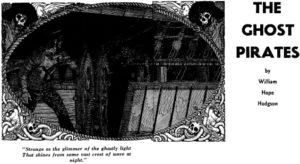
The Truth
Thomas Merton Carnacki, dubbed the Ghost Finder by the popular press, was a man troubled by the role in which he found himself. Much of his brusque procedure was designed to cover up his own awkwardness. His own lack of any dramatic psychic ability made him prone to nagging doubts, and his true interests were fine dining and exploring the new world of electrical inventions.
As everyone knows, Carnacki died a mysterious death in the first decade of the Twentieth Century. His funeral was held at Steeton, near Keighley, close to the rambling house which he maintained up there, Hathering. Some said at the time that the mistress of Hathering, a Miss Catherine Weatherhead, was also mistress to the Ghost Finder. This was never publicly confirmed.
In his will, Carnacki left 472 Cheyne Walk and its contents to his chronologer Henry Dodgson, veteran of the Boer Wars and illegitimate son of Charles Lutwidge Dodgson, aka Lewis Carroll. With some reluctance, Dodgson took on the mantle of the Ghost Finder, relying on other associates to make up for his lack of ab-natural knowledge. It was to be a mantle he never managed to shed, and the true tale unfolds through Mr John Linwood Grant’s series ‘Tales of the Last Edwardian’.
Despite the above being very clear, and a matter of public record, interfering folk such Joshua M Reynolds, Willie Meikle and Brandon Barrows (amongst others) have insisted on various re-interpretations of Carnacki’s life, and of those who followed him. Oh, their work is fine and dandy, and most enjoyable, but one wonders if they ever question the liberties they have taken.
For example, whilst Mr Reynolds has woven a charming succession of talented Royal Occultists, and Mr Meikle has added to the range of astonishing paraphernalia which might be employed in Ghost Finding, their bravado sometimes shocks. As for Mr Barrows, he is perhaps more restrained in his addition of further almost canonical events, but is no less culpable.
We are gracious, though. Joshua M Reynolds is rumoured to be gathering a new collection of his Royal Occultist stories, and is also available on Patreon for discerning folk.
https://www.patreon.com/posts/roaring-ship-12760969
And Brandon Barrows’ collection The Castle-Town Tragedy is now widely available on Amazon, after an initial limited edition release:
We shall come back to Mr Meikle later below, but first – an interlude…
Famous and Fantastic
Let’s have some of those illustrations, from Famous Fantastic Mysteries. FFM was an American SF and fantasy pulp magazine, edited by Mary Gnaedinger and published between 1939 to 1953, first by the Munsey Company and then by Popular Publications.
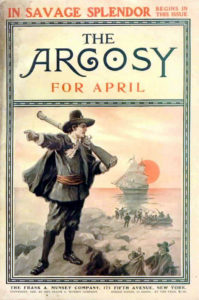 Incidentally, Frank Munsey, the Victorian founder of the former company, also started the famous Argosy magazine, which lasted until the late seventies.
Incidentally, Frank Munsey, the Victorian founder of the former company, also started the famous Argosy magazine, which lasted until the late seventies.
FFM published a range of short stories and reprinted novels included G. K. Chesterton’s The Man Who Was Thursday, H. G. Wells’ The Island of Dr. Moreau, Rider Haggard’s The Ancient Allan, and works by Algernon Blackwood, Lord Dunsany, and Arthur Machen.
In the process, it reprinted at least three works by William Hope Hodgson – his novels The Ghost Pirates and The Boats of the Glen Carrig, plus his story ‘The Derelict’. With illustrations.
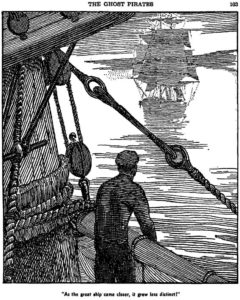
- December 1943. Cover by Lawrence Stevens. “King of the Gray Spaces” by Ray Bradbury, and other stories by J. Leslie Mitchell, William Hope Hodgson, and Robert W. Chambers. Illustrations by Hannes Bok.
- March 1944. Cover and illustrations by Lawrence. “The Man Who Was Thursday (A Nightmare)” by G. K. Chesterton and “The Ghost Pirates” by William Hope Hodgson.
- Volume 6 Number 5, June, 1945. Art and Cover by Lawrence. “The Boats of Glen Carrig” by William H. Hodgson, and “Even a Worm” by Henry Kuttner.
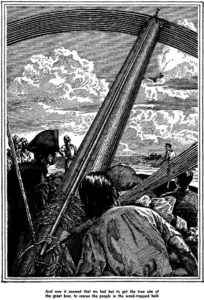
Lawrence, Lawrence Stevens and Lawrence Stern Stevens (1886-1960) were the same fellow. He did both covers and interiors for FFM at various times.

“He was most admired for his interior illustrations, which became his major activity when the aging Stevens was called upon to replace the great Virgil Finlay when the younger artist was drafted. Although faster, more versatile, and excellent at pen-and-ink stippling, he never achieved Finlay’s fame. Stevens’s finest work may be the dozens of interiors he did for Adventure from 1943 to 1954, though his interior illustrations for Famous Fantastic Mysteries, Startling Stories, Super Science Stories, and Thrilling Wonder Stories were also admired.”
http://www.sf-encyclopedia.com/
(thanks also to http://www.sffaudio.com/about/ for some of the art)

If anyone finds any more, do let us know.
Forthcoming Carnacki
Now, back to our authors, for we hear that author Willie Meikle, ever busy in multiple directions, has announced a brand new collection of his own Carnacki tales, to be released late 2017 by the Lovecraft ezine.
CARNACKI: THE EDINBURGH TOWNHOUSE AND
OTHER STORIES
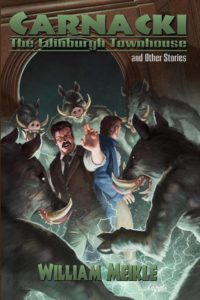
CARNACKI operates in shadowy occult realms, on the fringes of science, in places out of sight and out of mind of normal everyday people. But sometimes the darkness touches the lives of others in ways they cannot understand, and they find they need help – the kind of help that only Carnacki can provide.
In MR. CHURCHILL’S SURPRISE and INTO THE LIGHT Carnacki is called on to help a young Winston Churchill investigate a strangely empty German U-Boat captured in the North Sea, and in dispelling something that is lingering in a London inn that was home to a club of gentlemen seeking illicit pleasures and a path to power.
In FINS IN THE FOG and THE KING’S TREASURE, Carnacki again aids another Hodgson character, Captain Gault, in ridding him of a nemesis brought up from the deeps of the ocean intent on revenge, and in the salvage of a cursed treasure off the coast of Scotland.
In other tales you will meet an Egyptian amulet and the thing that protects it, a photographer whose pictures contain strange developments, a very strange occurrence on a cricket field, an old Edinburgh townhouse that is much more than it seems, and much more.
In these all new stories Carnacki helps old friends and new acquaintances in the never ending battle to keep the Great Beyond at bay.
CONTENTS
- THE PHOTOGRAPHER’S FRIEND
- FINS IN THE FOG
- THE CHEYNE WALK INFESTATION
- AN UNEXPECTED DELIVERY
- A STICKY WICKET
- THE KING’S TREASURE
- MR CHURCHILL’S SURPRISE
- THE EDINBURGH TOWNHOUSE
- A NIGHT IN THE STOREROOM
- INTO THE LIGHT
We shall look forward to that. Naturally, a more accurate version of history will be found in Mr Linwood Grant’s novella A Study in Grey, his Last Edwardian stories and his forthcoming collection A Persistence of Geraniums, but let’s not quibble. You can also find further Hodgsonian goodness in books such Carnacki: The Lost Cases, and Sam Gafford’s fascinating Hope Hodgson journal Sargasso. Amazon UK and US links below.
All of the modern authors above will be found in the pages of Occult Detective Quarterly, Issue 2 of which is available on Amazon now (see right-hand sidebar). Additional details of Carnacki pastiches, follow-ups and so on can be found here:
carnacki – the second great detective
And that’s quite enough Ghost Finding for one day, we think.
Next time: We haven’t a clue – but there will be something weird…

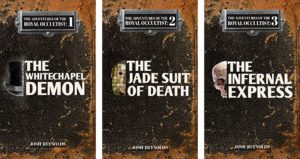
 the castle-town tragedy
the castle-town tragedy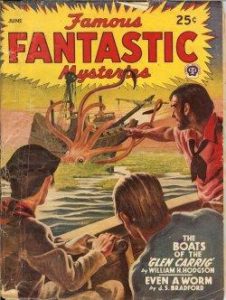
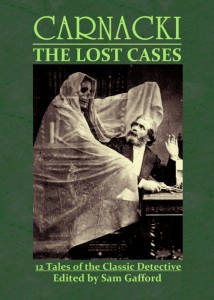 http://amzn.eu/eVPhTXZ
http://amzn.eu/eVPhTXZ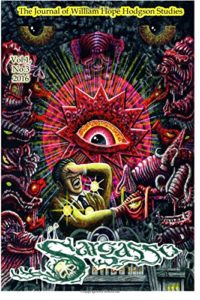

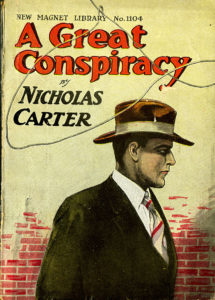


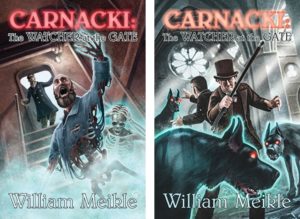
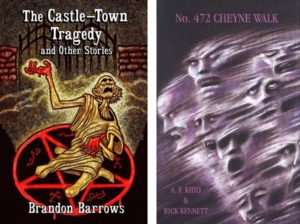

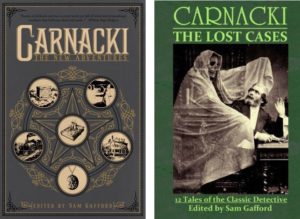
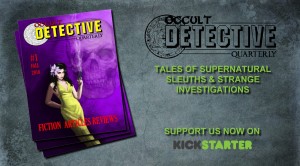
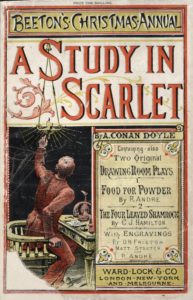
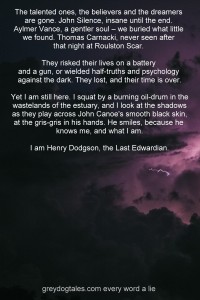
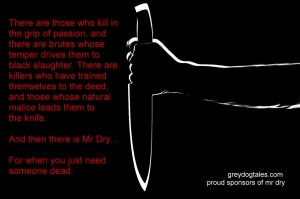
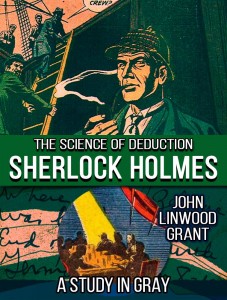
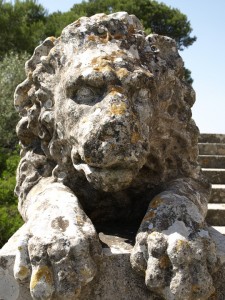



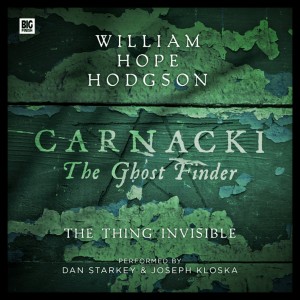
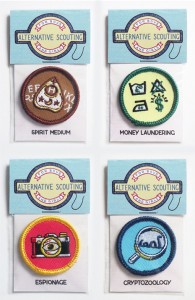 luke drozd
luke drozd